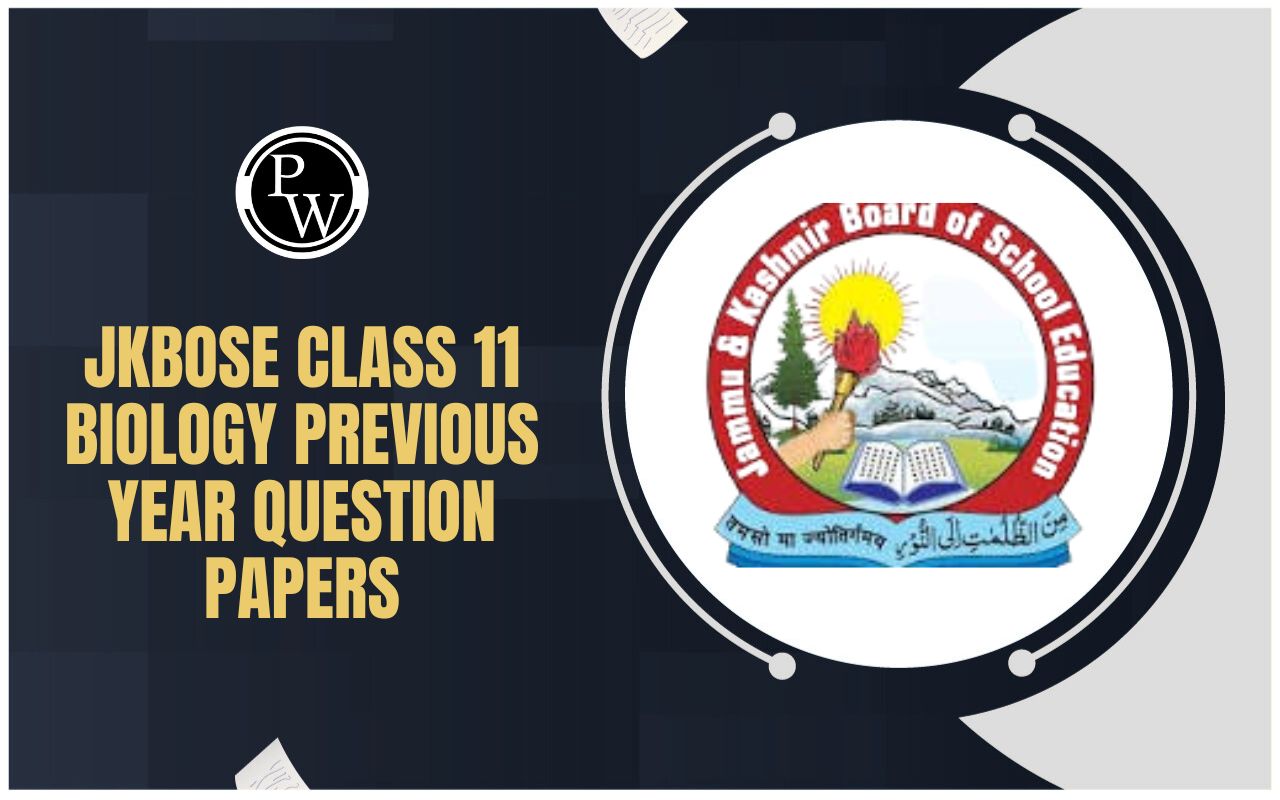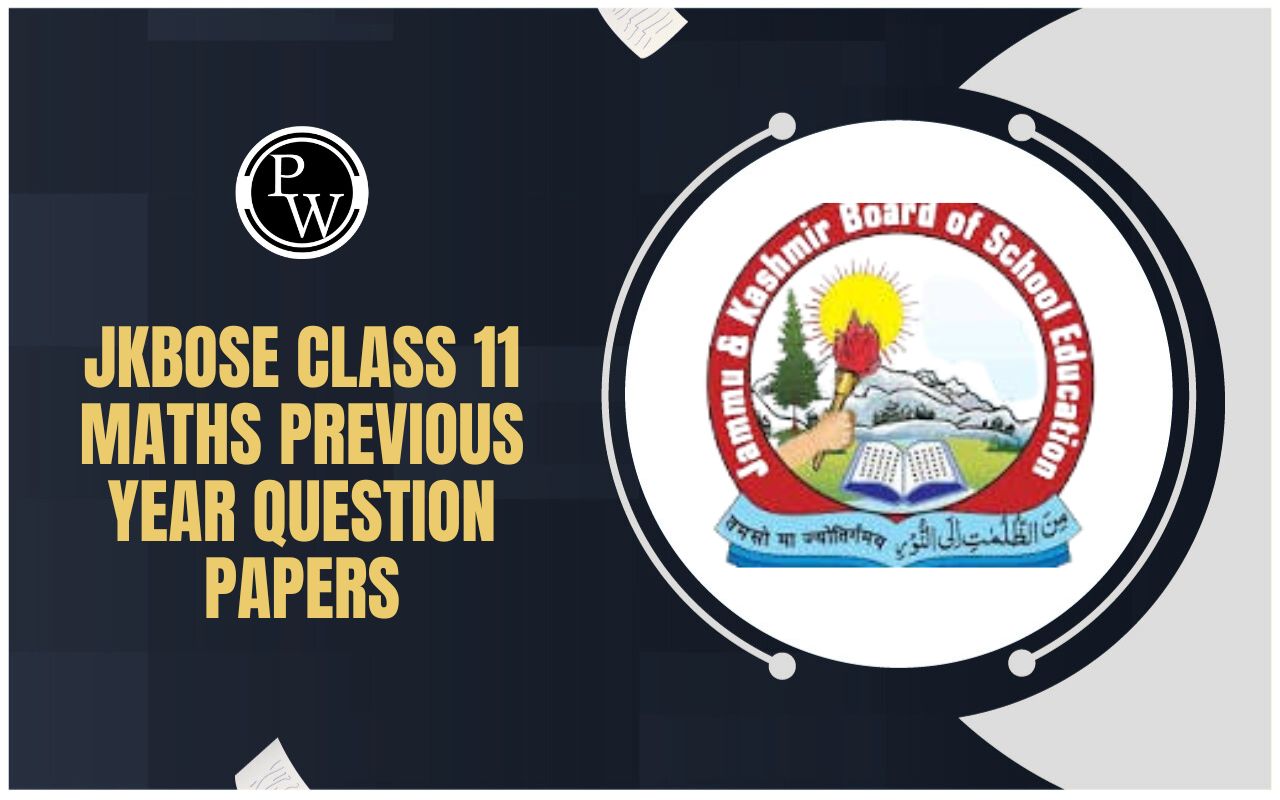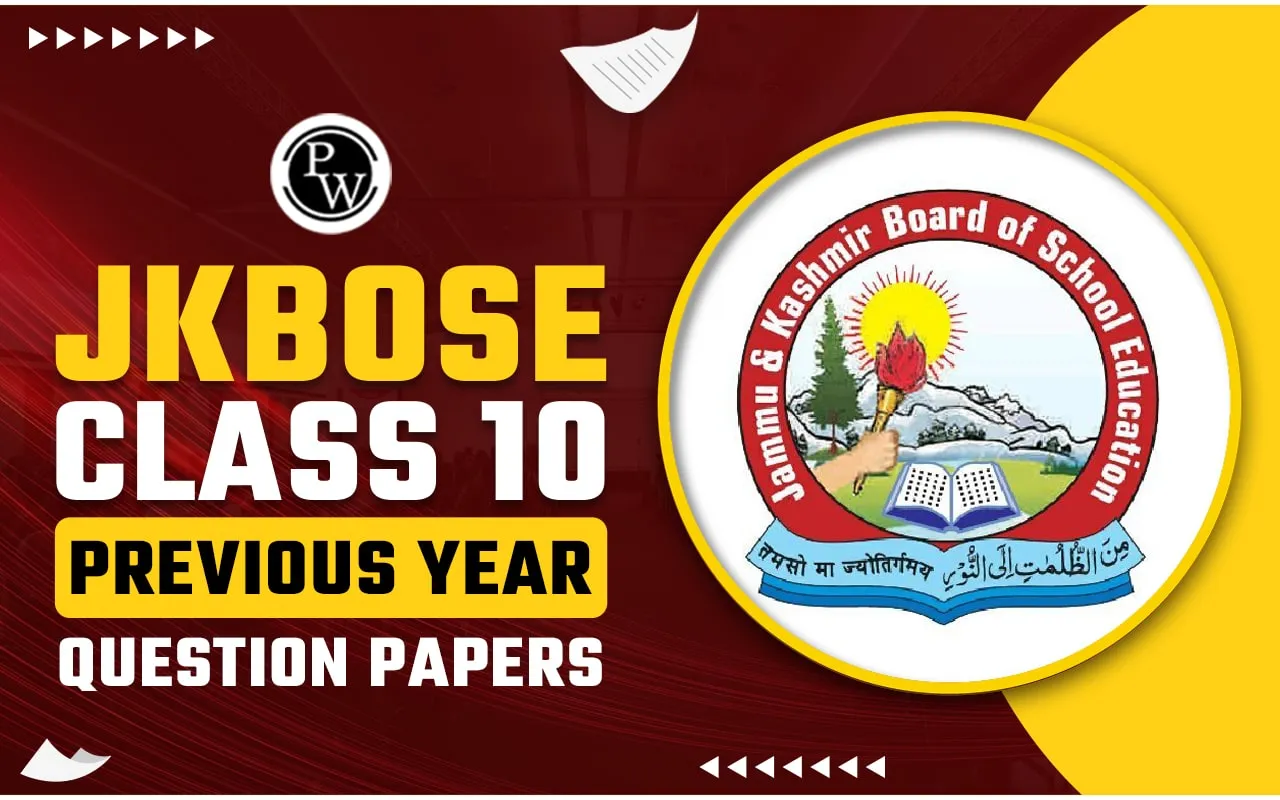
JKBOSE Class 11 Chemistry Syllabus 2025: The Jammu and Kashmir Board of School Education (JKBOSE) conducts the Class 11 examinations to prepare students for their final board exams. The board conducts exams in two phases i.e., Hard Zones and Soft Zones, based on the region's climatic and geographic conditions.
The Class 11 Chemistry syllabus for 2025 is structured to help students build a strong conceptual understanding in chemical sciences. It covers a range of topics, from basic atomic theory to more advanced concepts like thermodynamics and organic chemistry.
JKBOSE Class 11 Chemistry Syllabus 2025 Overview
Understanding the JKBOSE Class 11 syllabus is important for the science stream students. Chemistry being a core subject, lays a foundation for higher studies in medical, engineering, and research fields. It includes topics like chemical bonding, atomic structure, organic chemistry, and thermodynamics.
The JKBOSE exam pattern gives a structure to the preparation. The syllabus provides clarity about the weightage of each unit, the marks distribution, and the type of questions expected to come in the exam. Here’s the exam pattern given for reference:
-
Objective Type Question/MCQs of 1 mark each.
-
Very Short Answer Type Questions of 2 marks each.
-
Short Answer type questions of 3 marks each.
-
Long Answer type questions of 5 marks each.
JKBOSE Class 11 Chemistry Syllabus 2025 Download PDF
The JKBOSE Class 11 Chemistry Syllabus 2025 PDF will help students keep a track of their preparation. They can refer to the official syllabus PDF attached below for a clear understanding of the topics and subtopics included in the curriculum. It gives a clear idea about the chapter-wise weightage and marks distribution, allowing students to plan their studies more effectively.
Download JKBOSE Class 11 Chemistry Syllabus 2025
Study without using the internet
JKBOSE Class 11 Chemistry Syllabus 2025 Marking Scheme
The board includes the marking scheme along with the syllabus to help students understand the importance of each unit. Each unit carries a certain number of marks and students must prepare well for the units which carry high weightage of marks. 70 marks are dedicated for the written exam and the remaining 30 marks are reserved for the practical exam.
For the written exam, units like Structure of Atom, Thermodynamics, and Organic Chemistry are crucial to be understood thoroughly by the students as they carry the highest weightage of marks. The marking scheme is given below:
|
JKBOSE Class 11 Chemistry Syllabus 2025 Marking Scheme |
||
|
Unit |
Sub Topics |
Marks |
|
Unit I: Some Basic Concepts of Chemistry |
General Introduction: Importance of studying chemistry, Historical approach to particulate nature of matter, Laws of Chemical combination (numerical), Dalton's Atomic Theory, Concept of elements, atoms & molecules. Atomic and molecular masses, Mole concept and molar mass, percentage composition, empirical and molecular formula; chemical reactions, stoichiometry and calculation based on stoichiometry. |
07 Marks |
|
Unit II: Structure of Atom |
Discovery of electron, proton and neutron, atomic number, isotopes and isobars. Thompson's model and its limitations, Rutherford's model and its limitations. Bohr's model & its limitations, concept of shells and sub-shells. Dual nature of matter and light, de-Broglie's relationship. Heisenberg's uncertainty principle, concept of orbitals, quantum numbers, shapes of s, p and d- orbitals. Rules for filling electrons in orbitals- Aufbau's principle, Pauli's exclusion principle and Hund's rule. Electronic configuration of atoms, stability of half-filled and completely filled orbitals. |
09 Marks |
|
Unit III: Classification of Elements and Periodicity in Properties |
significance of classification, brief history of the development of periodic table. Modern periodic law and the present form of the periodic table, periodic trends in properties of elements: atomic radii, ionic radii, inert gas radii, ionization enthalpy, electron gain enthalpy, electronegativity, valency. |
06 Marks |
|
Unit IV: Chemical Bonding and Molecular Structure |
Valence electrons, lonic bond, covalent bond, bond parameters, Lewis structure, polar character of covalent bond, valence bond theory, resonance, geometry of covalent molecules, VSEPR theory, concept of hybridization involving s, p and d-orbitals and shapes of some simple molecules, molecular orbital theory of homonuclear molecules (Qualitative idea only), hydrogen bond. |
07 Marks |
|
Unit V: Thermodynamics |
Concepts of system, types of systems, surrounding, work, heat; energy intensive and extensive properties, state functions. First Law of Thermodynamics, internal energy, enthalpy, heat capacity, specific heat, molar heat capacity, measurement of E and H, Hess's law of constant heat summation, enthalpy of bond dissociation, combustion; formation, atomization, sublimation, phase transition ionization and dilution. Introduction of entropy as a state function, free energy change for spontaneous and non-spontaneous process and equilibrium. |
09 Marks |
|
Unit VI: Equilibrium |
Equilibrium in physical and chemical processes, dynamic nature of equilibrium, law of mass action, equilibrium constant, factors affecting equilibrium: Le-Chatelier's principle equilibrium-ionization of acids and bases, strong and weak electrolytes, degree of ionization, Concept of pH. ation of acids and bases, strong and weak electrolytes, degree of ionization, Concept of pH. Hydrolysis of salts (elementary idea), buffer solutions. Solubility product, common ion effect (with suitable examples). |
07 Marks |
|
Unit VII: Redox Reactions |
Concept of oxidation and reduction, redox reactions, oxidation number, balancing of chemical equations in redox reactions, applications of redox reactions. |
04 Marks |
|
Unit VIII: Organic Chemistry- Some Basic Principles and Techniques |
General introduction to organic chemistry, methods of purification, qualitative and quantitative analysis, classification and IUPAC nomenclature of organic compounds. Electronic displacement in a covalent bond: inductive effect, electromeric effect, resonance and hyper-conjugation. Homolytic and heterolytic fission of a covalent bond, free radicals, electrophiles, nucleophiles, carbocations and carbanions. Types of organic reactions. |
11 Marks |
|
Unit IX: Hydrocarbons |
Classification of hydrocarbons: Alkanes: Nomenclature, isomerism, conformations (ethane only), physical properties. Chemical reactions including free radical mechanism of halogenation, combustion and Pyrolysis. Alkenes: Nomenclature, structure of double bond (ethene), geometrical isomerism, methods of preparation, physical properties, chemical reactions- addition of hydrogen. halogen, water, hydrogen halides (Markownikov's addition and peroxide effect). ozonolysis, oxidation, mechanism of electrophilic addition. Alkynes: Nomenclature, structure of triple bond (ethyne), physical properties, methods of preparation, chemical reactions: acidic character of alkynes, addition reaction of hydrogen, halogens, hydrogen halides and water, Aromatic hydrocarbons introduction, IUPAC nomenclature, Benzene resonance, aromaticity, chemical properties, mechanism of electrophilic substitution-nitration, sulphonation, halogenations Friedel Craft's alkylation and acylation, directive influence of functional group in mono substituted benzene. |
10 Marks |
|
Total |
70 Marks |
|
The practical exam (30 marks) checks how well students understand the subject by doing experiments. It tests their ability to perform activities correctly, use lab equipment safely, note down observations, and explain what they learned from the experiments. The marking scheme of the practical exam is given below:
|
Practical Exam (30 marks) |
|
|
Content Based Experiments |
6 marks |
|
Quantitative Estimation |
8 marks |
|
Qualitative Analysis |
8 marks |
|
Project |
4 Marks |
|
Class Record and Viva-Voce |
4 Marks |
|
Total |
30 Marks |
JKBOSE Class 11 Chemistry Syllabus 2025 Recommended Book
It is important for students to follow the books prescribed by the JKBOSE Board. The JKBOSE Board follows the NCERT curriculum and the recommended book for Chemistry is:
-
A Textbook for Chemistry for Class XI published by NCERT, New Delhi.
The NCERT includes clear explanations of concepts, well-labeled diagrams, solved examples, and exercises at the end of each chapter to help reinforce understanding. Since the JKBOSE syllabus is based on the NCERT curriculum, students can rely on this book for board exams preparation.
How to Prepare the Chapters of JKBOSE Class 11 Chemistry?
-
Students must begin their preparation with chapters like Structure of Atom and Thermodynamics as each chapter carries 9 marks. These topics require conceptual understanding and are very scoring if understood well.
-
Units like Some Basic Concepts of Chemistry and Chemical Bonding are foundational and carry 7 marks each. These chapters often connect to other topics, so a strong grip here will make the rest of the syllabus easier to understand.
-
Units like Redox Reactions (4 marks) and Classification of Elements (6 marks) are relatively short. Don’t spend too much time on them, but make sure you understand key definitions and periodic trends properly as these can easily fetch full marks.
-
It is important that students pay attention to the practice of numericals. Both Equilibrium and Thermodynamics units contain’ numericals and together carry 16 marks. You must give time to understand the formulas, units, and conversions. Solve previous years’ questions and questions to improve your speed and accuracy.
-
Make short notes and do daily revision of the concepts you’ve completed especially for theory-based topics like Chemical Bonding and Classification of Elements. These notes will save time before the exam and help with last-minute revisions.
JKBOSE Class 11 Chemistry Syllabus 2025 FAQs
What is the syllabus of jkbose chemistry class 11?
Is class 11 chemistry difficult?
Is 11th tougher than 12th?
Is the 11th syllabus changed?
Which stream is best for class 11?










